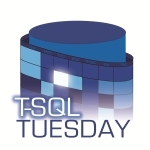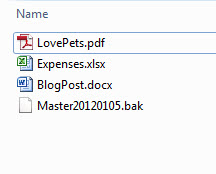Hey guys… I wrote a nice little log management script I thought some of you might like. It doesn’t do anything to your system so it’s safe to run. Well, I’m turning xp_cmdshell on and off so if you don’t like that then this script isn’t for you.
I’m just putting more info into SQLPERF. These are the most common things I need to know when I have a runaway log. Of course feel free to modify it any way you like. Unfortunately, due to when PS came into play, you can only run this on SQL2K8 boxes and above. If you want to run it on lower boxes you’ll have to take out the PS portion of it.
One more thing before I give you the script. You’re responsible for anything you run on your box. So don’t blame me if something happens and you mess something up. Like I said, I believe this script to be safe but only if you manage the xp_cmdshell portion properly. If you run the script as it is now it’ll turn off xp_cmdshell and if you’ve got processes that rely on it then they will fail. So just be warned yet again that this is a risk. And the reason I’m turning it off again is because I don’t want to open up anything on your box that shouldn’t be. But I really like having the extra info so I don’t have to go look it up. I hope you do too.
Some important notes about the script:
1. It gives you the physical location of the log files, so if there’s more than 1 you’ll see more than 1 entry for each DB.
2. The ShrinkCmd has a variable at the top used to control its default. I like to shrink down to 1GB a lot of times, but set this to whatever you like.
3. You can expand this for yourself in ways I can’t do for you. For instance you could tie it to your log backup job to see when the last execution was and if it failed.
4. I’ve added the last log backup date for you… you’re welcome.
5. The nature of how PS works, you have to change the instance name at the top to the current instance you’re working with. There’s nothing I could do about that. I tried to make it as simple as possible.
6. The PS portion relies on xp_cmdshell. However, I turn it on and off for you in the script. If you want it left on, make sure you comment that portion out of the code or you could have stuff that breaks because you just turned on xp_cmdshell.
declare @LogSize int,
@Instance varchar(100)
SET @LogSize = 1024
SET @Instance = 'localhost\default' -- If default instance then put Default ex: 'MyServer\default'
SET NOCOUNT ON
CREATE TABLE #LogSpace
(
DBName varchar(100),
LogSizeInMB float,
LogSpaceUsedInPCT real,
Status tinyint
)
INSERT #LogSpace
EXEC ('dbcc sqlperf(logspace)')
CREATE TABLE ##LogSpacePSTemp
(
DBName varchar(100),
LogBackupDate varchar(25)
)
exec sp_configure 'show advanced options', 1
reconfigure
exec sp_configure 'xp_cmdshell', 1
reconfigure
declare @cmd nvarchar(2000)
SET @cmd = 'sqlps "cd sqlserver:\sql\' + @Instance + '\databases; $a = dir; foreach($DB in $a){$DBName = $DB.Name; $LogBackupDate = $DB.LastLogBackupDate; invoke-sqlcmd -query ""INSERT ##LogSpacePSTemp SELECT ''$DBName'', ''$LogBackupDate''""" -SuppressProviderContextWarning}"'
--PRINT @cmd
exec xp_cmdshell @cmd, no_output
select
LS.DBName
, LS.LogSizeInMB
, LS.LogSpaceUsedInPCT
, D.log_reuse_wait_desc as LogReuseWait
, LT.LogBackupDate as LastLogBackup
, DATEDIFF(mm, LT.LogBackupDate, getdate()) as MinsSinceLastLogBackup
, D.recovery_model_desc as RecoveryModel
, MF.physical_name
, 'USE [' + D.name + ']; DBCC SHRINKFILE([' + MF.name + '], ' + CAST(@LogSize as varchar(10)) + ')' as ShrinkCmd
from #LogSpace LS
INNER JOIN master.sys.databases D
ON D.Name = LS.DBName
INNER JOIN master.sys.master_files MF
ON D.database_id = MF.database_id
INNER JOIN ##LogSpacePSTemp LT
ON LT.DBName = LS.DBName
ORDER BY LS.LogSizeInMB DESC
drop table #LogSpace
drop table ##LogSpacePSTemp
exec sp_configure 'xp_cmdshell', 0
reconfigure
exec sp_configure 'show advanced options', 0
reconfigure reconfigure


